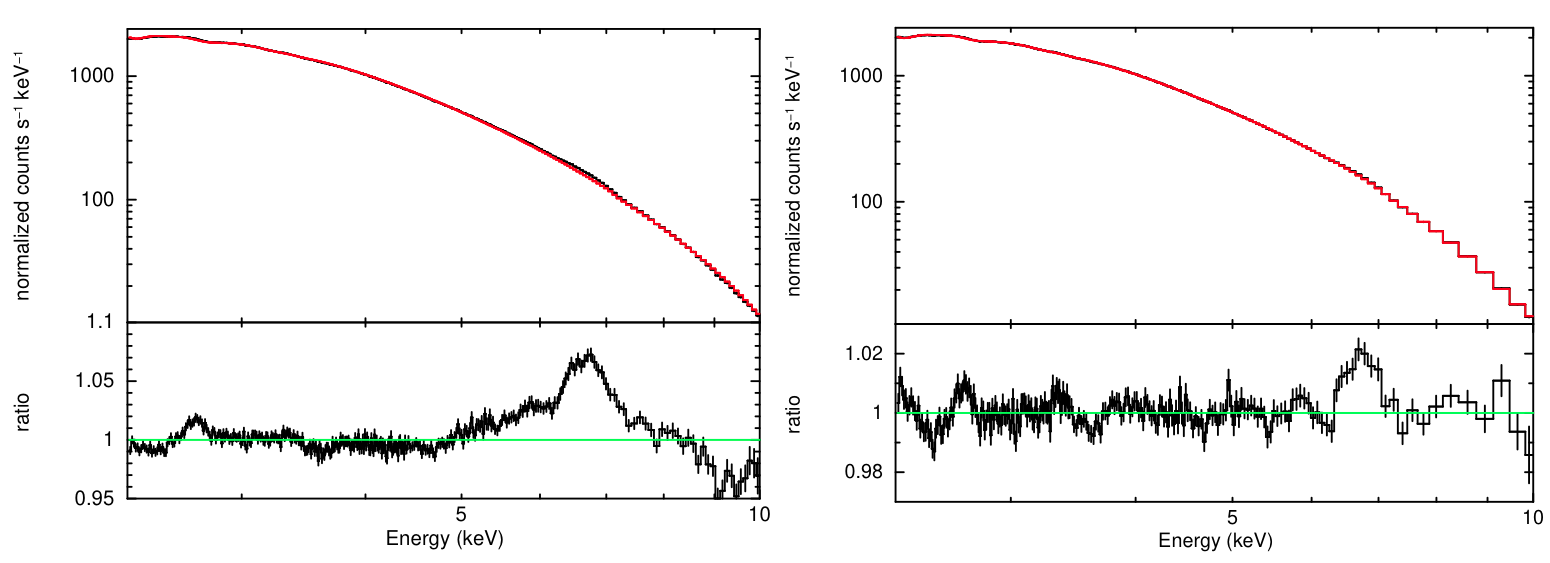NICER / ISS Science Nugget for June 15, 2018X-ray emission line reveals warped disk in MAXI J1535-571Astrophysical black holes have only two properties: mass, and spin. Masses can be measured using Kepler's laws of orbital motion. But, how can the spin of a black hole be measured? General Relativity has provided a means: the spin of a black hole determines how closely matter can orbit before inevitably falling into the hole. Therefore, dynamical information imprinted on gas in the innermost orbits can be used to measure the spin. Gas in these regions is so hot that it emits in X-rays. The last two ionization states of iron (where 24/26 and 25/26 electrons have been stripped) can survive even in extremely hot gas, and X-ray emission lines (6.70 keV and 6.97 keV) tied to these states bear the imprints of relativistic Doppler shifts and gravitational red-shifts. NICER has observed the Galactic stellar-mass black hole MAXI J1535-571 on numerous occasions through the Fall of 2017 and Spring of 2018. The throughput of NICER has enabled a robust measurement of the spin of the black hole in MAXI J1535-571 using iron emission lines. The spin appears to be near-maximal: a > 0.99 (where a = cJ/GM2 is a measure of spin between -1 and +1, and J,M are respectively the black hole's angular momentum and mass). NICER's spectral resolution also revealed the existence of a narrow iron line on top of the relativistically broadened iron line (see figure). While the overall shape of the broadened line tells us about the black hole spin and mass parameters, the existence of the narrow spectral feature reveals that the accretion disk feeding the black hole is warped.
These results are now accepted for publication in the Astrophysical Journal Letters (Miller, J. M., et al., 2018, ApJ, in press). Going forward, the unparalleled capabilities of NICER will markedly increase the number of stellar-mass black hole spin measurements, building a population against which LIGO gravitational wave measurements can be compared. This will ultimately help scientists to understand how stellar-mass black holes form and evolve. NICER
|



